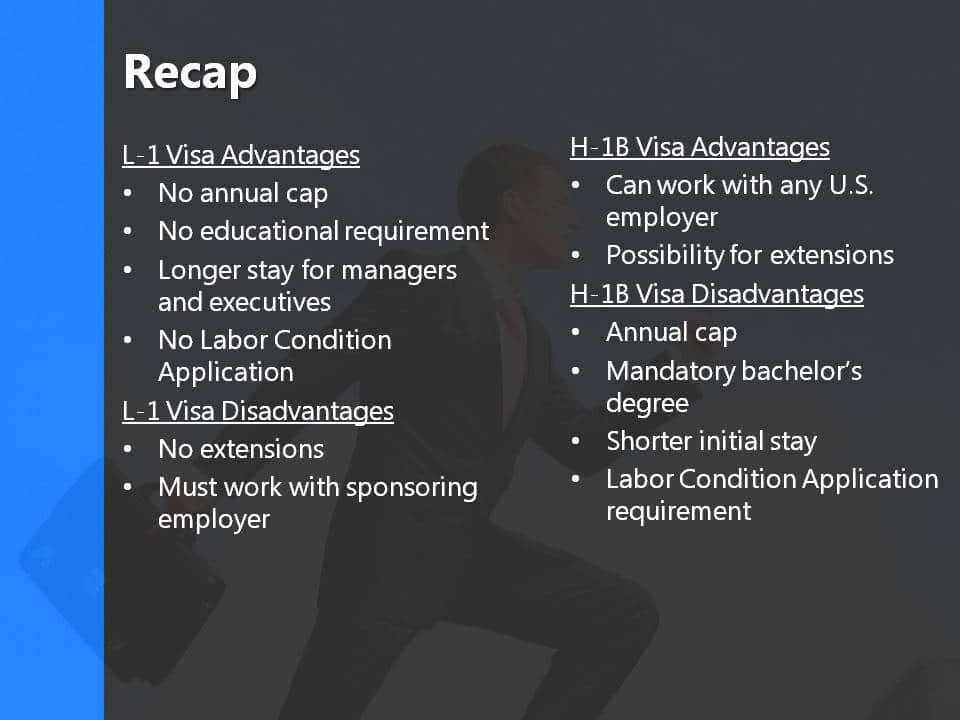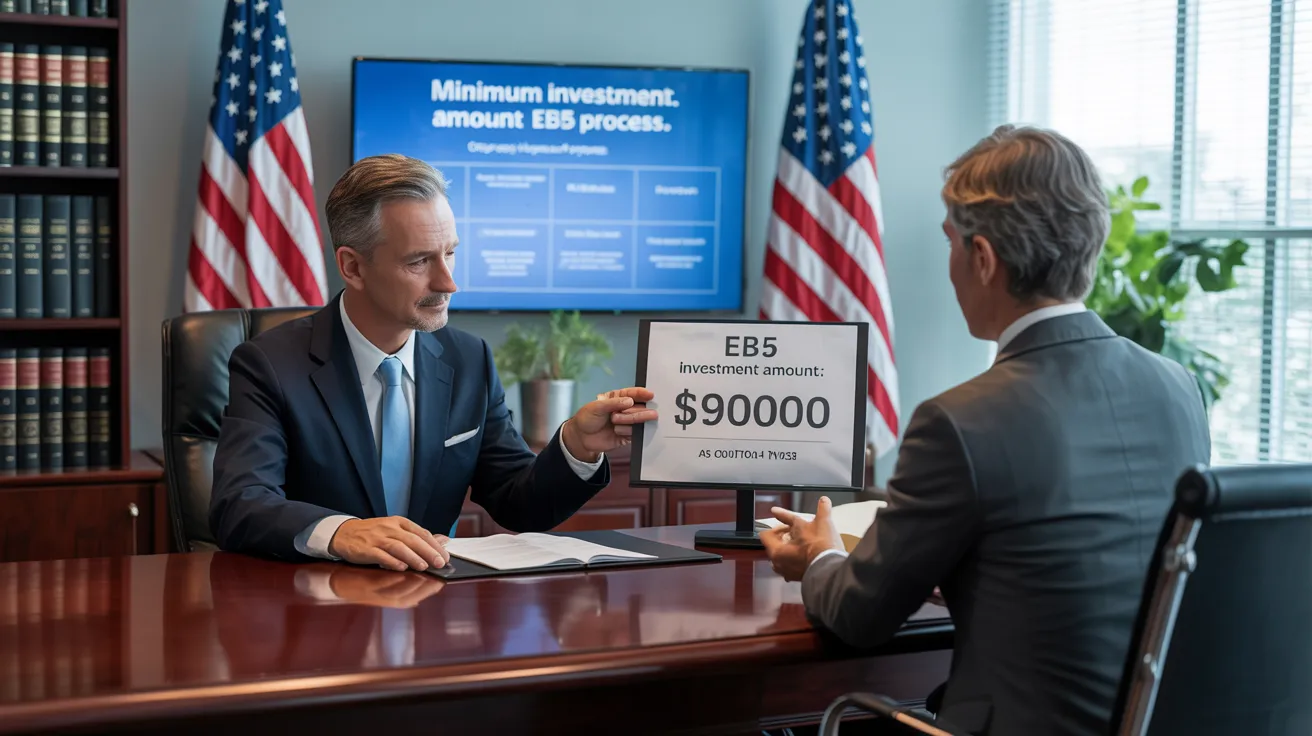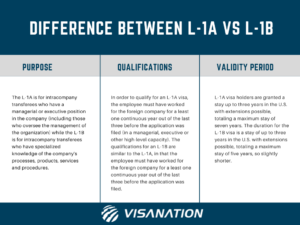L1 Visa Explained
Not known Factual Statements About L1 Visa
Table of ContentsL1 Visa Fundamentals ExplainedL1 Visa for BeginnersHow L1 Visa can Save You Time, Stress, and Money.Facts About L1 Visa UncoveredGetting My L1 copyright WorkL1 Visa Fundamentals Explained
Readily Available from ProQuest Dissertations & Theses Global; Social Scientific Research Costs Collection. DHS Workplace of the Assessor General. Retrieved 2023-03-26.
U.S. Division of State. Gotten 22 August 2016. "Employees paid $1.21 an hour to mount Fremont technology business's computers". The Mercury Information. 2014-10-22. Obtained 2023-02-08. Costa, Daniel (November 11, 2014). "Little-known short-lived visas for foreign tech workers dispirit incomes". The Hillside. Tamen, Joan Fleischer (August 10, 2013). "Visa Owners Replace Employees".
Fascination About L1 Visa
In order to be qualified for the L-1 visa, the international business abroad where the Recipient was utilized and the united state business must have a qualifying partnership at the time of the transfer. The different sorts of qualifying partnerships are: 1. Parent-Subsidiary: The Moms and dad suggests a company, company, or other lawful entity which has subsidiaries that it owns and manages."Subsidiary" implies a firm, firm, or other lawful entity of which a parent has, straight or indirectly, greater than 50% of the entity, OR has much less than 50% but has management control of the entity.
Example 1: Company A is incorporated in France and utilizes the Recipient. Firm B is included in the united state and intends to petition the Beneficiary. Firm A possesses 100% of the shares of Business B.Company A is the Moms And Dad and Business B is a subsidiary. For that reason there is a certifying relationship in between both business and Company B ought to be able to sponsor the Recipient.
Company A possesses 40% of Business B. The continuing to be 60% is had and controlled by Firm C, which has no connection to Company A.Since Business A and B do not have a parent-subsidiary relationship, Business A can not fund the Recipient for L-1.
Firm A possesses 40% of Company B. The continuing to be 60% is owned by Business C, which has no relationship to Company A. Nevertheless, Firm A, by official contract, controls and complete handles Company B.Since Company An owns much less than 50% of Company B but handles and regulates the firm, there is a certifying parent-subsidiary connection and Company A can fund the Beneficiary for L-1.
Unknown Facts About L1 Visa
Associate: An affiliate is 1 of 2 subsidiaries thar are both owned and regulated by the same parent or person, or possessed and regulated by the same team of individuals, in generally the exact same ratios. a. Instance 1: Business A is integrated in Ghana and utilizes the Recipient. Business B is included in the united state
Business C, also integrated in Ghana, owns 100% of Company A and 100% of Firm B.Therefore, Company A and Firm B are "associates" or sister business and a certifying relationship exists in between both companies. Business B should be able to sponsor the Recipient. b. Instance 2: Business A is incorporated in the united state
Firm A is 60% owned by Mrs. Smith, 20% owned by Mr. Doe, and 20% possessed by Ms. Brown. Company B is integrated in Colombia and presently employs the Recipient. Firm B is 65% possessed by Mrs. Smith, 15% owned by Mr. Doe, and 20% had by Ms. Brown. Company A and Business B are associates and have a qualifying partnership in two various ways: Mrs.
The L-1 visa is an employment-based visa group established by Congress in 1970, enabling international firms to move their managers, executives, or crucial workers to find out more their U.S. operations. It is generally described as the intracompany transferee visa. There are 2 main kinds of L-1 visas: L-1A and L-1B. These types appropriate for staff members employed in different placements within a business.

Additionally, the beneficiary has to have worked in a supervisory, executive, or specialized employee placement for one year within the 3 years coming before the L-1A application in the international business. For new office applications, international work should have remained in a supervisory or executive capability if the beneficiary is concerning the USA to work as a supervisor or executive.
The Only Guide for L1 Visa

If granted for an U.S. business operational for more than one year, the first L-1B visa is for approximately 3 years and can be prolonged for an additional 2 years (L1 Visa). Conversely, if the united state business is newly developed or has been functional for much less than one year, the initial L-1B visa is released for one year, with expansions offered in two-year increments
The L-1 visa is an employment-based visa category developed by Congress in 1970, enabling multinational firms to transfer their managers, executives, or vital workers to their United state procedures. It is frequently referred to as the intracompany transferee visa.
The Definitive Guide to L1 Visa
Additionally, the beneficiary has to have functioned in a managerial, executive, or specialized click here worker position for one year within the three years preceding the L-1A application in the foreign business. For new office applications, foreign employment should have been in a managerial or executive capacity if the beneficiary is pertaining to the USA to work as a manager or executive.
for as much as seven years to manage the procedures of the U.S. associate as an executive or supervisor. If provided for an U.S. business that has been functional for greater than one year, the L-1A visa is originally provided for up to 3 years and can be expanded in two-year increments.
If L1 Visa law firm provided for an U.S. company operational for even more than one year, the first L-1B visa is for up to 3 years and can be extended for an additional 2 years. Conversely, if the united state firm is recently established or has been operational for less than one year, the initial L-1B visa is released for one year, with extensions offered in two-year increments.